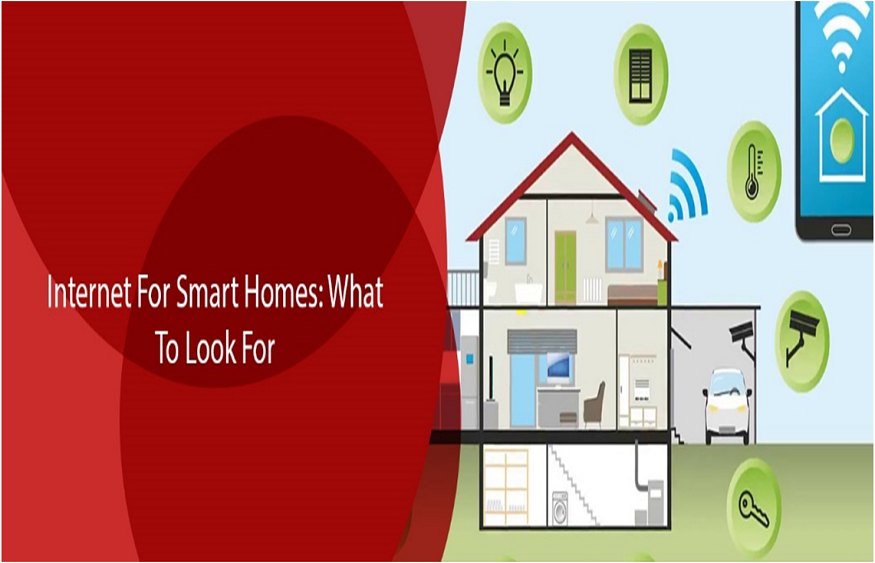
Smart homes run on the internet. All the IoT devices from the video doorbell to the thermostat work with the cloud. You need fast, reliable internet at every corner of the home for it to function the way you want it.
Wherever you live, there are probably many ISPs offering high-speed connections, but there are also other factors you must consider. Overall, we recommend the internet from Grande Communications to be the best for smart homes.
Let’s look at the things that make an internet connection good for smart homes.
1. Good Upload Speed
Smart homes generally need greater upload speeds than an average home. Unlike smartphones and computers which mostly download data, smart home devices mostly upload data to the cloud. Video devices such as smart cameras and video doorbells particularly need high upload speeds to allow you to store and watch high-quality footage.
A top upload speed of around 10 Mbps is good enough for most smart homes. If you have more smart home devices than an average home, go for 20 Mbps.
2. Fiber-Rich Network
A smart home should make your life more convenient and calm, but it may not work out that way if you have a poor connection. Cable-based networks tend to have high latency, which can result in an annoying delay between when you press the button on the remote and when the smart lights turn on. There’s also no point in live footage for a video doorbell if you have a four-second-long lag.
Today, many ISPs are updating their networks with fiber-optic cables. Fiber uses light to transmit data, which travels faster than electronic signals. An internet connection from a fiber-rich ISP can make your smart home truly feel smart.
Fiber has around 10,000 times more bandwidth compared to coaxial cables. Higher bandwidth means lower network congestion when many people are using the internet. With a fiber-rich network, you get close to the advertised top speed most of the time. Your devices don’t have to face any interruption.
3. Wall-to-Wall Wi-Fi
Almost all the devices in a smart home rely on Wi-Fi to communicate with the hub and stay connected to the cloud. But Wi-Fi routers have a limited range. The devices farther from the router may receive weak signals full of packet errors, which increases latency and leads to delays.
Wall-to-wall Wi-Fi devices are aimed at improving Wi-Fi signal strength throughout the house to improve lag. There are three common wall-to-wall Wi-Fi devices: long-range routers, Wi-Fi extenders, and mesh Wi-Fi systems.
Long-range Wi-Fi routers increase their range by producing more powerful signals. However, they need to increase the power by a factor of four to double the range, while they may still leave blind spots. Wi-Fi extenders, on the other hand, work by creating a new Wi-Fi network that repeats the signals from the original Wi-Fi. This can increase the range but also lower the internet speed. Two Wi-Fi networks in the same home can also be cumbersome.
Mesh Wi-Fi systems are the best of both worlds. They’re composed of multiple routers placed throughout the house working synchronously with each other. Each router has a limited range, but together, they perfectly cover the entire house with little to no blind spots left.
Unlike Wi-Fi extenders, your devices automatically switch to the router it’s closest to for optimal speed. A mesh Wi-Fi system such as eero Wi-Fi can make your smart home faster and much more responsive.
4. Free From Data Caps or Contracts
Smart homes can use a lot of data. Smart devices are constantly using data to stay connected. Video doorbells and smart cameras in particular can use a large amount of data to upload footage to the cloud. You don’t want an internet connection that charges you overage fees when you run out. You may find yourself running out every month.
If you have signed a contract with the provider, you can’t even quit without paying an early termination fee. Make sure you get a connection with no data caps or contact requirements.
5. Secure Wi-Fi
Wi-Fi is convenient, but it’s also less secure than Ethernet. It’s pretty difficult to intercept a completely wired network, and harder still to do it without making any waves. Wi-Fi signals, on the other hand, are there for anyone to see. It is theoretically possible for a criminal to read your traffic or even hack your security system to enter the house.
Wi-Fi devices use encryption and other technologies to keep the network private and secure, but you can never be safe enough. eero Secure + is a group of tools also from eero that add another layer of security on top of your home Wi-Fi, which is another reason we love eero Wi-Fi.
Get Grande Internet Witheero Mesh Wi-Fi
Grande Internet matches our criteria for internet for smart homes better than any other ISP. It is fiber-rich, free from data caps and contracts, and has high upload speed. You can also get eero Wi-Fi with Grande internet. Visit buytvinternetphone.com to learn more.








